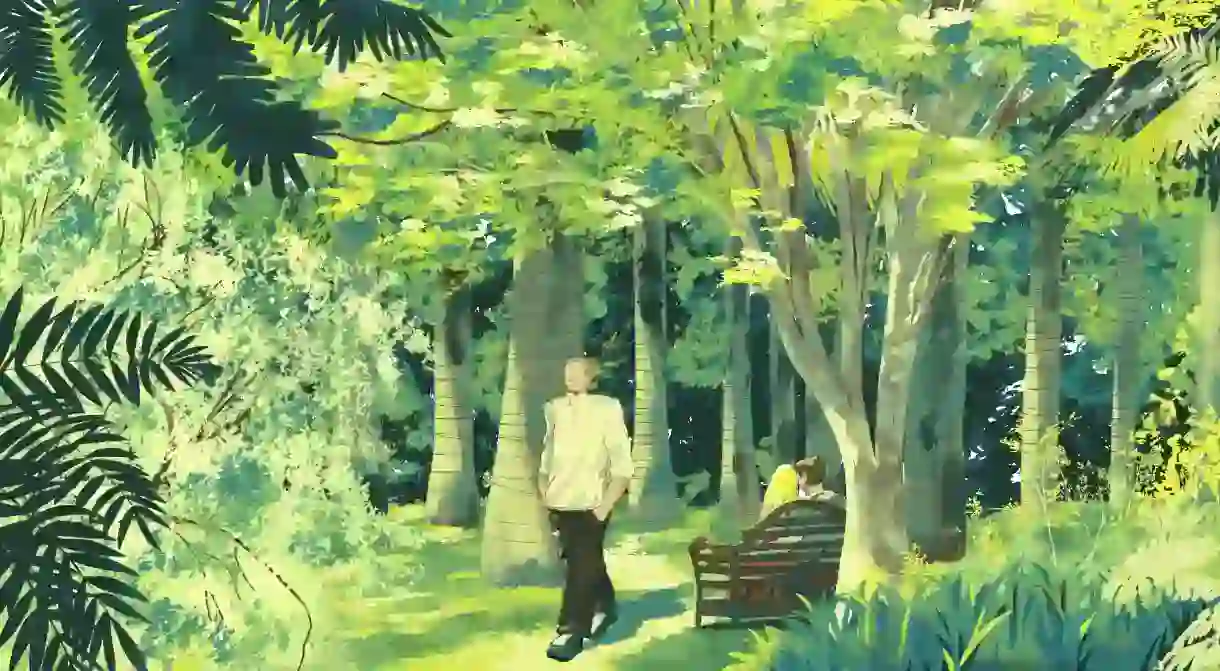A Walk Through eSwatini’s Summerfield Botanical Garden

Summerfield Botanical Garden – the first and only registered botanical garden in the small country of eSwatini – is a haven for flora and fauna, including many rare species. Visitors from around the world come to enjoy its natural beauty and learn more about its conservation efforts. Find out more about this designated national conservancy in this comprehensive Culture Trip guide.

Summerfield Botanical Garden is set on 100 hectares (247 acres) of land that businessman John Carmichael bought in 1984. Back then, it was an industrial wasteland – one that he set out to turn into a beautiful oasis. And the process was long and intense. In addition to the hundreds of tonnes of fertile topsoil brought in, dams were built, and indigenous plant species were reintroduced to the area, attracting birds, insects and animals. Now, jacarandas, cacti, succulents, fruit trees, herbs, edible flowers, vegetables, royal palms and a plethora of other plant species are flourishing throughout the garden.
Due to a lack of irrigation, workers had to collect water from the nearby Bobokazi River. If that wasn’t hard enough, the team had to face the challenge of droughts and bushfires destroying the land they had worked so hard to restore.
However, their hard work paid off, and the stunning botanical garden is now a designated national conservancy with eSwatini’s greatest collection of plants and trees. The Summerfield Botanical Garden is a registered non-profit initiative that aims to promote conservation and raise awareness of the importance of the country’s indigenous plant life and the sustainable use of these resources. Supporting the local community is also a key goal. The garden employs more than 90 eSwatini residents and helps provide educational support for their children. With the success of the garden came the demand for food, drink and accommodation options, which resulted in the creation of the luxurious, five-star Summerfield Resort set within the grounds of the garden.
What to do
Visitors to the Summerfield Botanical Garden are welcome to explore it in a leisurely manner and admire its diversity. In particular, the wetlands and water gardens offer a great habitat for many different types of birds and butterflies, including lemon doves, which nest in the area. While birdwatching is enjoyable throughout the year, it’s particularly good from November to March when migratory bird species have returned to the wetlands.
For thrillseekers, Summerfield Resort can organise a wide variety of adventurous activities, including horse riding, hiking, mountain biking, quad biking, caving, abseiling, paragliding, tubing and whitewater rafting. You can even get hitched in Summerfield’s Wind-Chime Wedding Gazebo.
What to see
Due to its size, the Summerfield Botanical Garden has plenty to explore. It’s located close to the Bobokazi River in the Nokwane Valley, near Manzini, which is known for its natural beauty, fascinating rock formations and incredible views. The garden itself showcases stunning waterfalls and freshwater lakes, as well as the abundant flora and fauna the conservancy protects.
Visit the Lily Pond Garden to see a charming bed of colourful water lilies, a pathway lined with royal palm trees and an imposing waterfall, or find a range of delicate ferns in the Fernery. Stimulate the senses with a visit to the Fragrant Garden, which has been designed to host scented, seasonal flowers so that there’s something in bloom no matter what time of year you visit.
In the Cactus and Succulent Garden – also known as the Sun Garden – guests will find plants that are more common in eSwatini’s drier regions, such as cacti, euphorbias, yuccas, bushveld trees and grasses. The Pottager and Herb Garden is home to a huge array of organic fruit trees, edible flowers, herbs and vegetables that not only look fantastic but are also used in Summerfield’s kitchen throughout the year. As well as its flora and fauna, the garden also showcases many life-size handmade sculptures featuring native African wildlife.
Summerfield Botanical Garden is also home to eSwatini’s largest collection of indigenous and tropical plants and trees. In its arboretum, there are several trees from eSwatini and southern Africa that are being grown for both conservation and research purposes. Among the rarest of the plants displayed in the gardens are the cycads: the world’s most threatened plant group. These prehistoric plants date back to the Mesozoic Era – when dinosaurs ruled the Earth – and have survived three mass extinction events on the planet.

Where to eat
The team at Summerfield is committed to using locally sourced, free-range and seasonal food, and its gardens are functional as well as aesthetic, with many of the fruits, vegetables and herbs picked each day and used in the kitchens. For example, during lychee season, the garden’s employees harvest the fruit and sell bags of it to visitors.
The resort has several restaurants. Guests can have a bite to eat or take afternoon tea on the Summer Terrace, sip on a drink in the Palm Cascades Cocktail Lounge or enjoy the country’s best fine dining in the Palm Cascades Restaurant.













